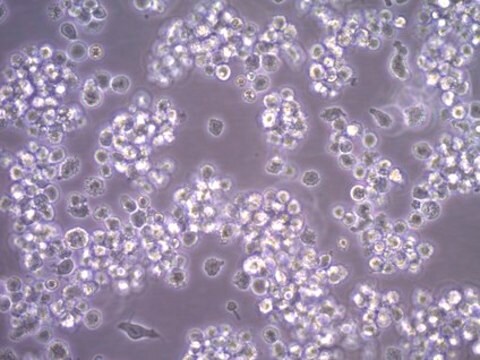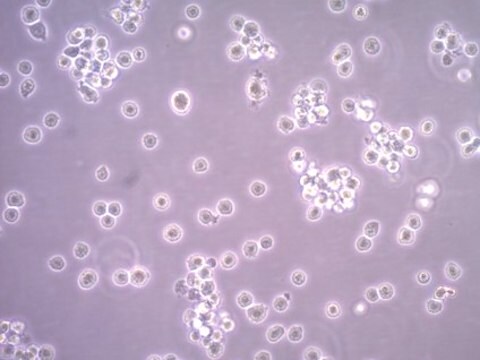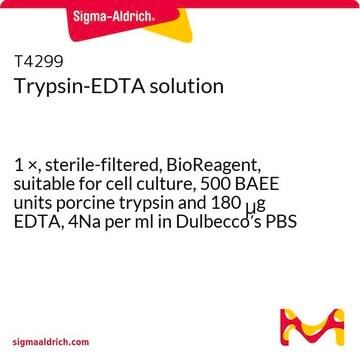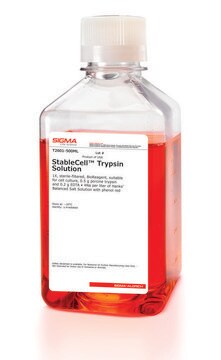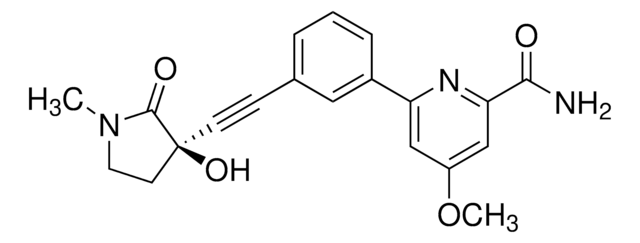推薦產品
生物源
rat
品質等級
抗體表格
purified immunoglobulin
抗體產品種類
primary antibodies
無性繁殖
3C8, monoclonal
物種活性
mouse
技術
flow cytometry: suitable
同型
IgG1κ
NCBI登錄號
UniProt登錄號
運輸包裝
ambient
目標翻譯後修改
unmodified
基因資訊
mouse ... Ltbr(17000)
一般說明
Tumor necrosis factor receptor superfamily member 3 (UniProt: P50284; also known as Lymphotoxin-beta receptor, LTBR) is encoded by the Ltbr (also known as Tnfcr, Tnfrsf3) gene (Gene ID: 17000) in murine species. The tumor necrosis factor (TNF) receptor superfamily comprises more than 20 type-I transmembrane proteins. LTBR is a single-pass type I membrane protein that contains 4 TNFR-Cys repeats and serves as a receptor for the heterotrimeric lymphotoxin containing LTA and LTB, and for TNFS14/LIGHT. LTBR plays critical roles in inflammation and lymphoid organogenesis through activation of NF-kB pathway. The binding of heterotrimeric lymphotoxin to LTBR is shown to induce NF-kB activation and cell death in HT29 adenocarcinoma cells. LTBR activation promotes apoptosis via TRAF3 and TRAF5. It is also reported to play a role in the development of lymphoid organs. Mice deficient in the LTBR gene fail to form lymph nodes and lack NK and NK-T cells. In the adults, LTBR signaling is essential for maintaining the splenic architecture, for the integrity of marginal zones, and for compartmentalization of T and B cells.
特異性
Clone 3C8 detects Tumor necrosis factor receptor superfamily member 3 in NIH3T3 cells.
免疫原
LT betaR-Fc decoy protein.
應用
Agonist or Inhibitor Analysis: A representative lot detected LTBR in Agonist or Inhibitor applications (Zhu, M., et. al. (2006). J Clin Invest. 116(11):2964-71).
Flow Cytometry Analysis: A representative lot detected LTBR in Flow Cytometry applications (Yi, T., et. al. (2013). Elife. 2:e00757).
Agonist or Inhibitor Analysis: A representative lot detected LTBR in Agonist or Inhibitor applications (Dejardin, E., et. al. (2002). Immunity. 17(4):525-35).
Agonist or Inhibitor Analysis: A representative lot detected LTBR in Agonist or Inhibitor applications (Vondenhoff, M.F., et. al. (2009). J Immunol. 182(9):5439-45).
Agonist or Inhibitor Analysis: A representative lot detected LTBR in Agonist or Inhibitor applications (Yi, T., et. al. (2013). Elife. 2:e00757).
Agonist or Inhibitor Analysis: A representative lot detected LTBR in Agonist or Inhibitor applications (Banks, T.A., et. al. (2005). J Immunol. 174(11):7217-25).
Flow Cytometry Analysis: A representative lot detected LTBR in Flow Cytometry applications (Yi, T., et. al. (2013). Elife. 2:e00757).
Agonist or Inhibitor Analysis: A representative lot detected LTBR in Agonist or Inhibitor applications (Dejardin, E., et. al. (2002). Immunity. 17(4):525-35).
Agonist or Inhibitor Analysis: A representative lot detected LTBR in Agonist or Inhibitor applications (Vondenhoff, M.F., et. al. (2009). J Immunol. 182(9):5439-45).
Agonist or Inhibitor Analysis: A representative lot detected LTBR in Agonist or Inhibitor applications (Yi, T., et. al. (2013). Elife. 2:e00757).
Agonist or Inhibitor Analysis: A representative lot detected LTBR in Agonist or Inhibitor applications (Banks, T.A., et. al. (2005). J Immunol. 174(11):7217-25).
Research Category
Inflammation & Immunology
Inflammation & Immunology
This rat monoclonal Anti-LTBR, clone 3C8, Cat. No. MABF2049, is tested for use in Flow Cytometry and in functional studies for the detection of Lymphotoxin-beta receptor/LTbeta R.
品質
Evaluated by Flow Cytometry in NIH/3T3 cells.
Flow Cytometry Analysis: 1 µg of this antibody detected LTBR in one million NIH/3T3 cells.
Flow Cytometry Analysis: 1 µg of this antibody detected LTBR in one million NIH/3T3 cells.
標靶描述
44.95 kDa calculated.
外觀
Protein G purified
Format: Purified
Purified rat monoclonal antibody IgG1 in buffer containing 0.1 M Tris-Glycine (pH 7.4), 150 mM NaCl with 0.05% sodium azide.
儲存和穩定性
Stable for 1 year at 2-8°C from date of receipt.
其他說明
Concentration: Please refer to lot specific datasheet.
免責聲明
Unless otherwise stated in our catalog or other company documentation accompanying the product(s), our products are intended for research use only and are not to be used for any other purpose, which includes but is not limited to, unauthorized commercial uses, in vitro diagnostic uses, ex vivo or in vivo therapeutic uses or any type of consumption or application to humans or animals.
未找到適合的產品?
試用我們的產品選擇工具.
儲存類別代碼
12 - Non Combustible Liquids
水污染物質分類(WGK)
WGK 1
分析證明 (COA)
輸入產品批次/批號來搜索 分析證明 (COA)。在產品’s標籤上找到批次和批號,寫有 ‘Lot’或‘Batch’.。
我們的科學家團隊在所有研究領域都有豐富的經驗,包括生命科學、材料科學、化學合成、色譜、分析等.
聯絡技術服務
